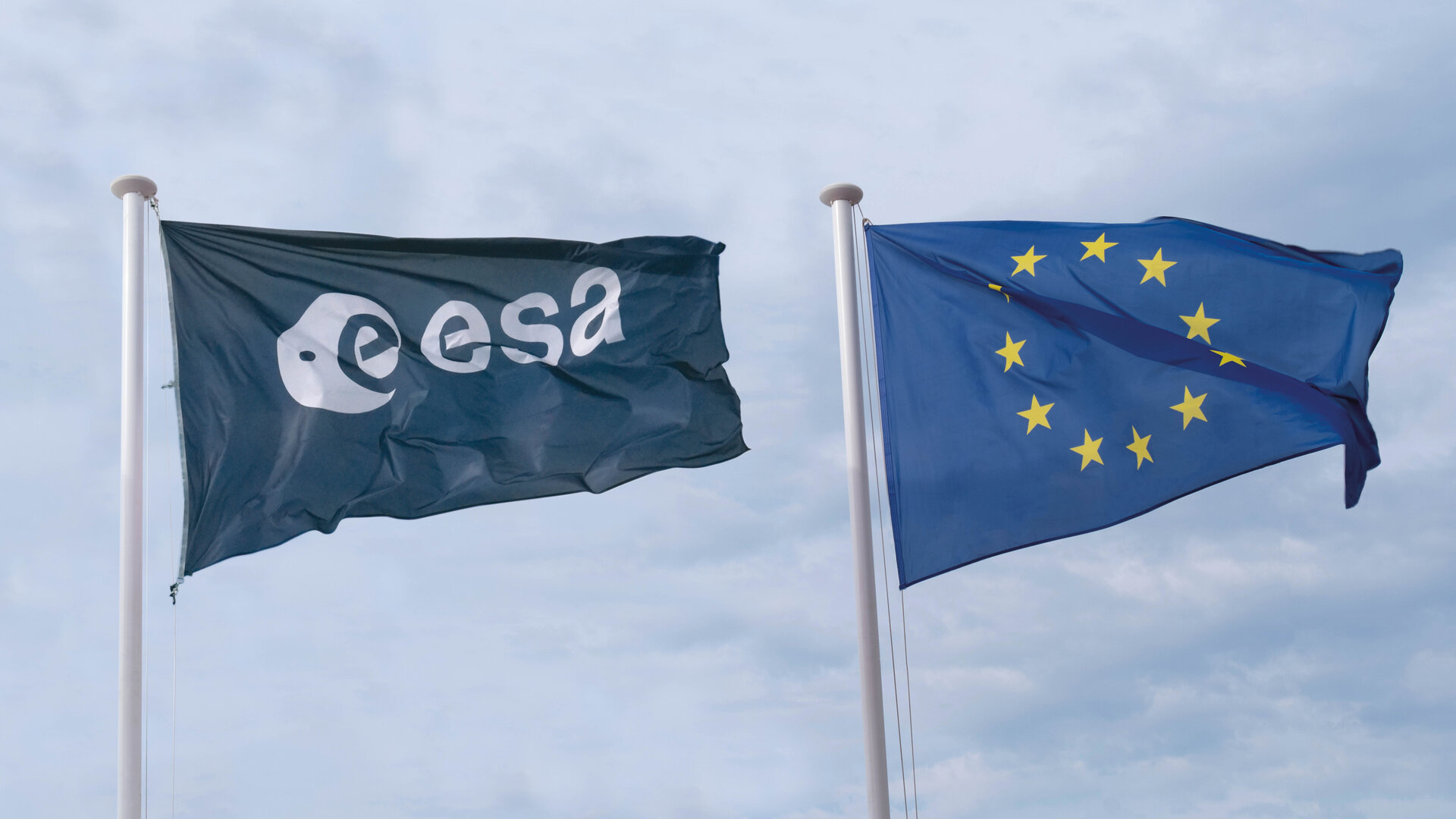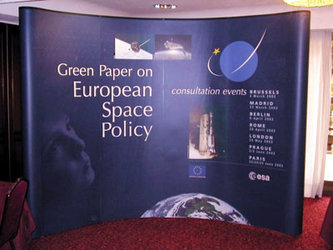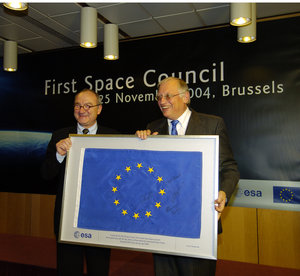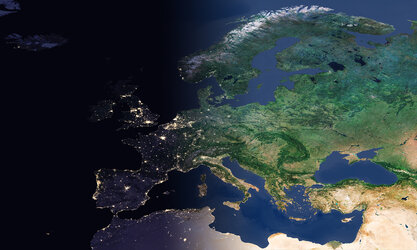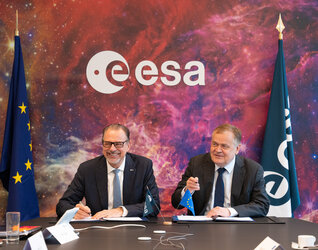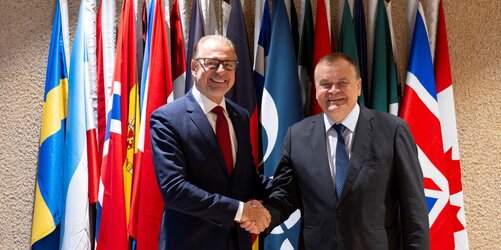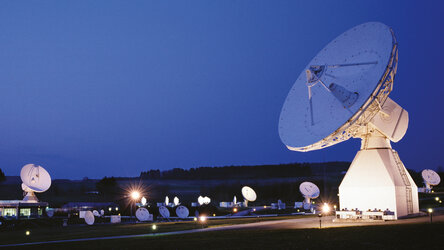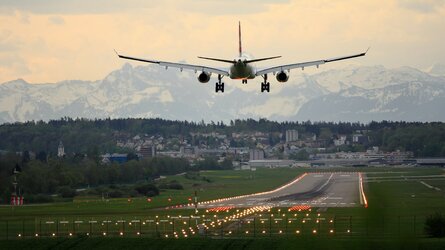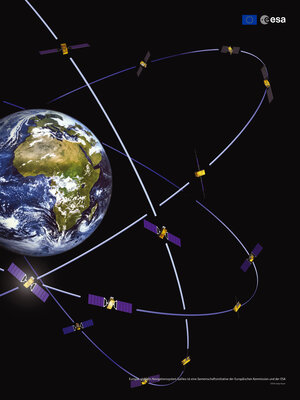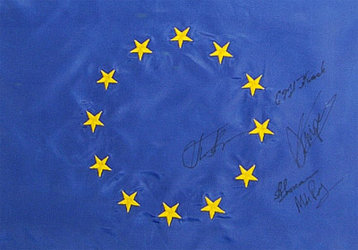20th anniversary of the EU/ESA Framework Agreement
ESA has been a close partner with the EU in European space for over 20 years. This year, the two organisations are marking the two decades of cooperation since their first Framework Agreement came into force on 28 May 2004.
While ESA and the EU are separate and distinct organisations, they share the same goal: to strengthen Europe and benefit its citizens.
The two institutions have different ranges of competences, different member states and are governed by different rules and procedures, but together they form a formidable partnership, working towards the common objective of securing the future of Europe in space, by developing Earth observation, navigation, secure connectivity and space entrepreneurship.
In recent years, the ties between the two institutions have been reinforced by the increasing role that space plays in supporting Europe’s social, political and economic policies.
Most recently, ESA and the EU signed a collaboration arrangement on ESA Accelerators, joining forces to leverage the use of space to address critical global challenges such as climate change, digitalisation, crisis response and the protection of critical infrastructure.

Cyberattacks and geopolitics also threaten today’s increasingly digital world, leading to the disruption of essential supplies such as power and water. In response, ESA has already started work on supporting the EU’s latest flagship space programme – a highly secure, satellite-enabled connectivity system called Iris2 that will promote digital autonomy and provide a strategic asset for the EU.
ESA is also developing the new generation of the EU’s Galileo navigation satellites that will support European autonomy and resilience.
ESA designed, developed and qualified the Gallleo system, including the space and ground segments, and procured launches of its satellites. Today, Galileo is the most accurate satnav system in the world, guaranteeing a global positioning service under civilian control.
Similarly, ESA designed and developed a new family of space missions called Sentinels, specifically for the operational needs of Copernicus, the Earth observation component of the EU’s space programme.
Over 25 years ago, Copernicus set out to transform the way we see our planet. It is now the largest environmental monitoring programme in the world.
The Sentinel satellites are now delivering data to improve the management of the environment, understand and mitigate the effects of climate change and ensure civil security, with ESA’s expertise in space programme development and management contributing to this success.
The origins of Galileo and Copernicus

Although the legal basis for the EU/ESA cooperation is provided by a Framework Agreement which entered into force in May 2004, cooperation between the two organisations goes back much further.
Europe’s first satellite navigation system began in ESA’s ARTES-9 programme in 1995. From this, EGNOS (European Geostationary Navigation Overlay Service) was born. EGNOS was a joint project of ESA and Eurocontrol (the European organisation for the safety of air navigation), augmenting the US GPS system for safety critical applications such as flying aircraft or navigating ships.
As well as serving as a precursor to Galileo, EGNOS is currently European aviation’s regional Satellite-based Augmentation System in use for assisting safe landing procedures across Europe (ownership of EGNOS infrastructure was transferred from ESA to the EU in 2009, and certified for Safety of Life applications in March 2011).
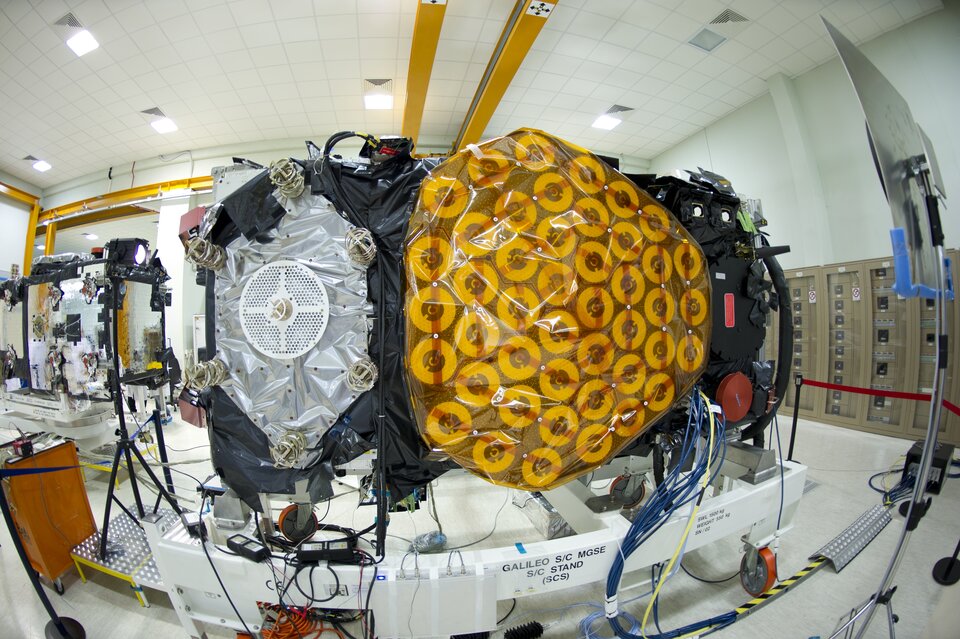
Going back to the 1990s, the EU saw the need for Europe to have its own global satellite navigation system, unlike the more military-oriented systems of the US GPS and Russian GLONASS, which could be shutdown in extreme circumstances. In 1999, the EU Transport Council approved a proposal from ESA for an independent European system intended primarily for civilian use.
The result was that ESA and the EU joined forces to build Galileo, one of the most ambitious projects ever undertaken in Europe for space applications. After intensive studies reviewing different system architectures, the basic system design was agreed in 2000 by representatives from ESA Member State delegations, from the EU and from industry.
The Preliminary Design Review of the Galileo system was completed in 2002, and contracts for the first Galileo satellites were signed in July 2003. The first experimental satellite, GIOVE-A, was launched in December 2005, followed by a second test satellite, GIOVE-B, launched in April 2008.
The first satellite to be part of the operational system was launched in 2011, and Galileo began early operational services in December 2016.
The Copernicus Earth-monitoring programme can also trace its roots back to the late 1990s. ESA had been developing tools and expertise over many years and was recognised worldwide for its capabilities in Earth observation.
In 1978, Meteosat had already placed Europe at the forefront of operational meteorology and now, with the second generation, it would have the most modern observation system in geostationary orbit. More missions, then in preparation, would improve Europe's atmospheric sounding capabilities and consolidate its leading position in weather and climate modelling.
While ESA excelled in development and scientific exploitation of these missions, Europe needed a framework for developing and strengthening its competitiveness in the area of environmental applications and security, at a time when Europe was seeking to free itself from dependence on data from American sources, needed for risk and crisis assessment.
Such a system, the Global Monitoring for Environment Security, or GMES, was proposed in May 1998 by institutions involved in the development of European space activities, through a declaration known as the ‘Baveno Manifesto’.

GMES was envisioned as a complete decision-support system for use by the public and policymakers, enabling the acquisition, interpretation and distribution of all useful information related to the environment, risk management and natural resources.
It would improve deficiencies in European information gathering by better coordinating existing information gathering resources situated on the ground, and it would use current Earth observation missions, but also require the development of new ones, with their unique perspectives providing a whole new dimension of information about Earth.
In 1999, the name was changed to ‘Global Monitoring for Environment and Security’, recognising that the management of the environment also has security implications (in 2012, the EU renamed GMES to Copernicus).
ESA's Director General Antonio Rodotà and EU Research Commissioner Philippe Busquin, responsible for EU space policy, convened the first meeting of the GMES Steering Committee in Brussels in 2002. By 2004, the first Framework Agreement between ESA and the EU provided the basis for a space component of GMES.
Together with EGNOS, the Galileo and Copernicus systems would be the keys to the realisation of a unified space policy emerging from the ever-closer partnership between the two European organisations.
Space councils and a European space policy

Relations between ESA and the EU have been marked by milestones over the years that prepared the basis for the cooperation that we see today and for the future.
In March 2000, ESA Director General Antonio Rodotà asked a committee of experts to help with independent advice on the evolution of ESA. The committee was made up of Carl Bildt, former Swedish Prime Minister and UN envoy to the Balkans, Jean Peyrelevade, President of Crédit Lyonnais, and Lothar Späth, CEO of Jenoptik, together representing a combination of high-level political, economic and industrial expertise.
The three examined the organisation of the public space sector in Europe and the role of ESA in that sector, the institutional relationship between ESA and the EU and the associated potential for synergies between civil and security aspects.
The ESA and EU Councils met together for the first time in November 2000 to adopt parallel resolutions endorsing a jointly elaborated ‘European Strategy for Space’. They also endorsed the setting up of a cooperative structure to bring together the ESA Executive and the European Commission: a high-level joint taskforce to make proposals for the continuing development and implementation of the European Strategy for Space.
In January 2003, the European Commission introduced the 'Green Paper on European Space Policy', prepared in cooperation with ESA. The Green Paper looked into Europe’s assets and weaknesses in the space sector in order to launch a debate on Europe’s space policy with all players including national and international organisations, the European space industry and its users, and Europe’s scientific community and citizens.
In November 2003, ESA Council adopted the Framework Agreement endorsed by the EU Council that October, which entered into force in May 2004. This agreement recognised that both parties have specific complementary and mutually reinforcing strengths, and committed them to work together to avoid duplication of effort. The agreement also foresaw meetings of the EU Council and the ESA Ministerial Council, which would become known as 'Space Councils'.
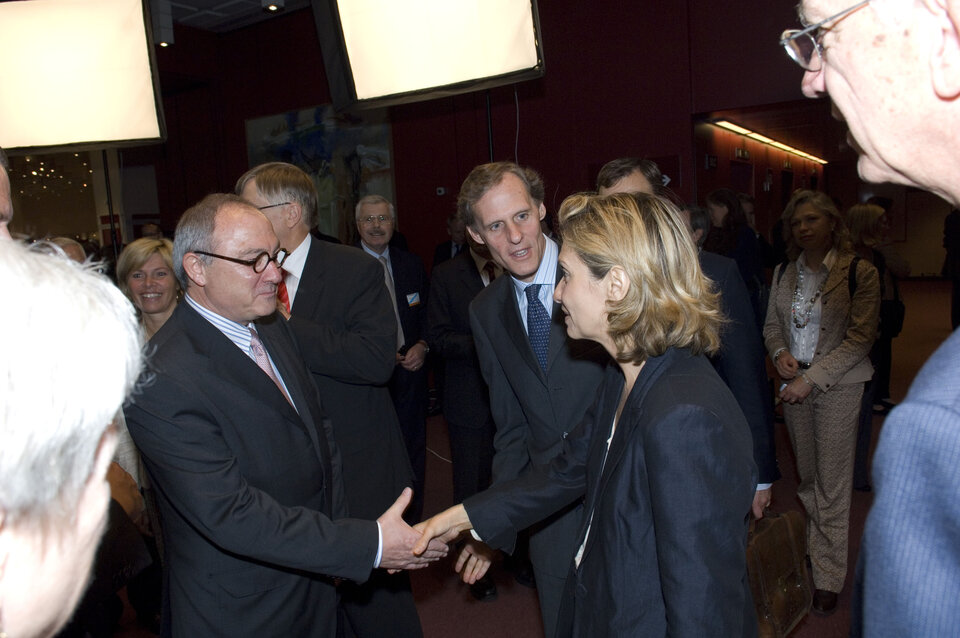
The first Space Council met in November 2004, and was a major political milestone for Europe in space, offering ministers representing the 27 EU and/or ESA Member States the first opportunity to discuss jointly the development of a coherent overall European space programme.
The third Space Council in November 2005 established GMES as the second EU flagship programme in addition to Galileo. The fourth Space Council endorsed the European Space Policy in May 2007.
In 2010, the Treaty on the Functioning of the European Union (TFEU), formerly known as the Treaty of Rome, entered into force, recognising a shared EU competence for space. In particular, Article 189 directed the EU to make appropriate relations with ESA.
The most recent Financial Framework Partnership Agreement between ESA and the EU was signed in June 2021 in a ceremony to celebrate the launch of the EU’s space programme agency, EUSPA. Here, the roles and responsibilities of all partners, the European Commission, ESA and EUSPA, were defined to ensure the level of autonomy needed to efficiently develop and implement these programmes.
The FFPA agreement also included additional components under ESA’s responsibility, such as the preparation and design of the future GOVSATCOM space segment and validation of a prototype for Quantum Key Distribution satellite in support of the new EU flagship on secure connectivity, and space safety activities to monitor space hazards.
More information
The ESA Brussels Office, established in 1991, is part of ESA’s EU Relations Office, which reports to ESA’s Director General. It represents ESA to the EU institutions, in particular the European Commission, the Council of the EU and the European Parliament, and facilitates close cooperation between them and the agency. See https://www.esa.int/Brussels_Office
References
Krige, John. Fifty Years of European Cooperation in Space, Beauchesne, June 2014
ESA Copernicus archive
ESA Galileo archive
https://www.esa.int/EGNOS
https://www.esa.int/ESA_and_the_EU


